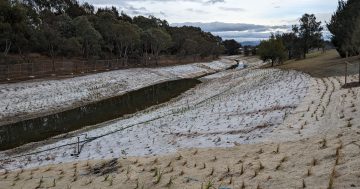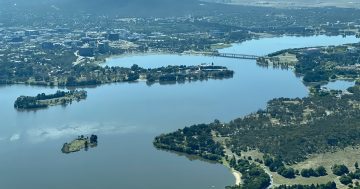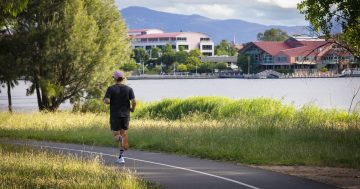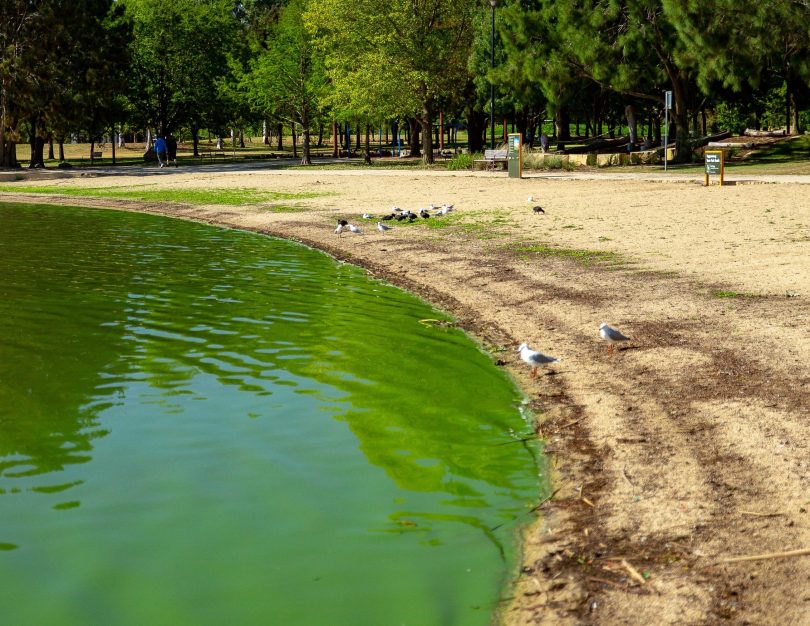
Algal blooms make Lake Tuggeranong unusable. Photo: File.
Tuggeranong’s trees and garden-loving residents are the main suspects in the district lake’s green summers and new detective work will help discover just which is the main culprit and what to do about it.
New modelling to be done by the University of Canberra’s cooperative research centre, eWater, is part of the next stage of the ACT Healthy Waterways program that has just kicked off.
ACT Healthy Waterways has completed a seven-year program of research and infrastructure projects such as pollution traps, wetlands and rain gardens, and now it is upgrading and combining its models so it can plan future projects aimed at reducing water pollution and the problems it causes such as the blue-green algae blooms in Lake Tuggeranong, and to a lesser degree in Lake Burley Griffin.
Previous research has found that urban run-off into Lake Tuggeranong contained five times the level of nutrients, including phosphorous, required to produce algal blooms.
ACT Healthy Waterways Program Manager Ralph Ogden said the new research would focus primarily on leaves and grass but also garden fertiliser as the main sources.
“Tuggeranong is a big place and we’ve got a lot more pollution than we’d like to have coming into the system. We need to better narrow down the source of that pollution,” he said.
Whether it is mainly leaf matter or fertiliser, the solution lies in managing the catchment and stormwater run-off better, although public education campaigns might also help reduce the amount of fertiliser people use, he said.
Healthy Waterways projects built as part of that first stage are doing their jobs but there are not enough of them to make a big enough dent in the nutrient inflow to stop the algal bloom.
“What we want to be able to do for this next model is really be able to answer questions like how much infrastructure and other programs are needed to reduce the incidence of algal blooms in Lake Tuggeranong,” Mr Ogden said.
The work may help pinpoint potential locations for new infrastructure and calculate its potential benefits.
“The infrastructure is going to focus on ways to prevent that drainage from actually ever ending up in the stormwater route, and if it does end up in stormwater it’s clean,” Mr Ogden said.
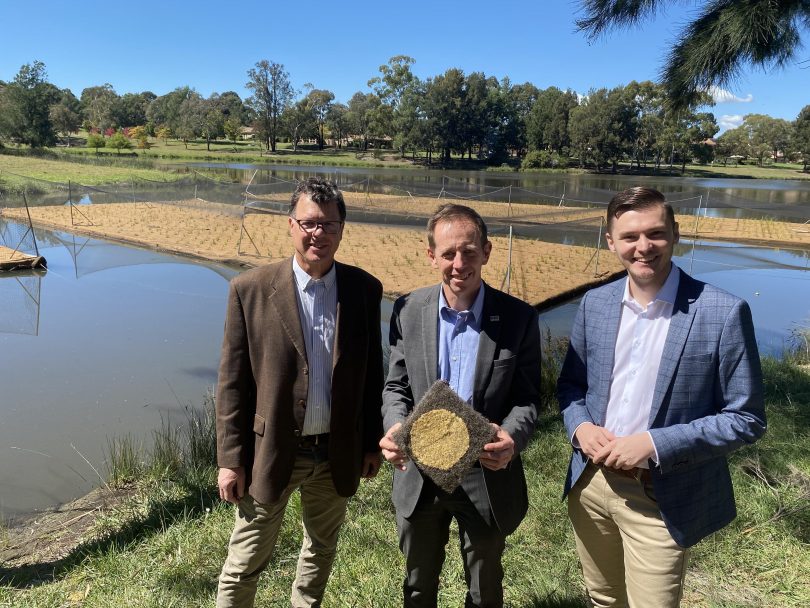
Healthy Waterways Program Manager Ralph Ogden, Minister for Water Shane Rattenbury and local MLA Johnathan Davis at the floating wetland project. Photo: ACT Government.
The work will also look at the potential benefits of harvesting stormwater runoff to irrigate sports fields, although there are some public health hurdles for that.
Mr Ogden said there were some concerns about water spray possibly making people ill, but “it’s done elsewhere so we think we can do it here”.
Healthy Waterways will be working with ACT Health to see if there are any health risks.
The other component to reducing algal blooms will be the management of the lake itself.
Earlier this year, Healthy Waterways began a two-year trial of floating wetlands designed to suppress blooms by competing with algae for light and nutrients.
“Will the pollution level ever be low enough that there won’t be any algal blooms?” Mr Ogden asked.
“We’ll know that answer in a few years. I’m reasonably confident we can solve the problem.”












